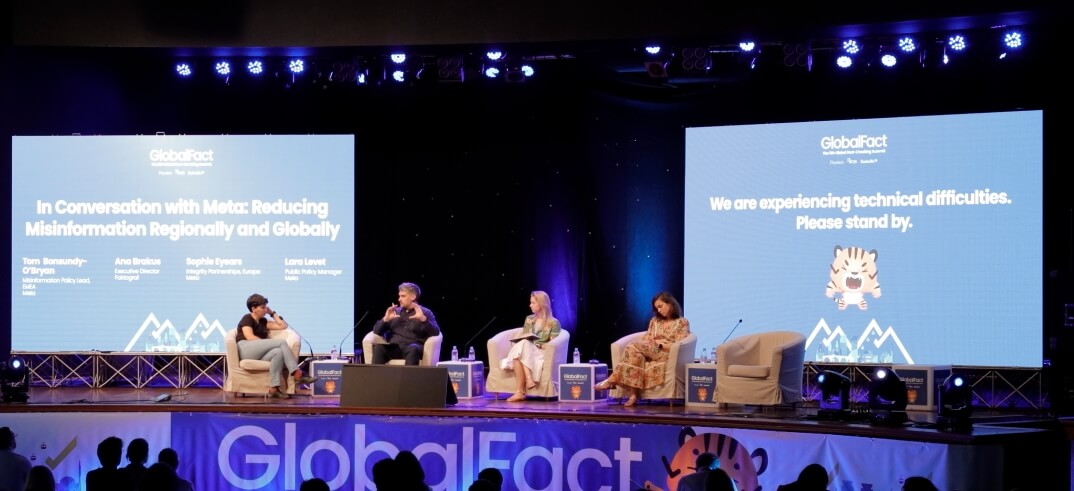Matt Kiser worked in news for many years, and now he works as a product manager at an algorithm startup in Seattle. But every day, Matt spends upwards of six hours working by hand on his single-subject blog, which launched in January.
Starting a new project to track what the fuck just happened today. https://t.co/p64yr6BKJ3
— Matt Kiser (@Matt_Kiser) January 29, 2017
Single subject, distinct tone, clear formatting, total understanding of what its audience wants. @WTFJHT is the best email newsletter.
— Dave Lee (@DaveLeeBBG) February 12, 2017
The concept of his blog was pretty simple: Matt simply wanted to log what he called “the daily shock and awe in Trump’s America” and make it easy for others to consume.
Over the past three weeks, What the Fuck Just Happened Today? has grown immensely popular. Matt now has more than 48,000 newsletter subscribers (and an enviable open rate over 50 percent) and is on pace to receive more than 2.5 million pageviews in February.
The site is easy to read, easy to parse and easy to share. There are no ads, and WTF Happened Today makes it easy to see news in context with what happened yesterday and the day before that. The digests have gotten more complex: You can compare Day 1 with Day 25: there’s more stuff, with more context — the site is changing in real time, to better meet reader needs.

Kiser. (Photo credit: Matt Kiser’s Twitter feed)
Matt and I talked about where the site could go next, what news organizations could learn from this approach and how he decides what to curate:
How did you come up with the idea for What the Fuck Just Happened Today?
There was no grand plan or vision. I’m winging it here. I kind of made a blog, shared it on Facebook, and then it went nuts. Like many, I’m a news junkie, and I was having a difficult time keeping up with the cadence of news coming out of the White House — and everyday the hits keep coming.
Related: Covering 45, Poynter’s podcast on coverage of President Trump
I’m a big user of both Instapaper and Evernote. I found I was putting more stuff into Instapaper than I could read, so I moved over to Evernote, where I could group the links by day. At the time I was dumping in the headline and maybe the subhead from the article, and the link. After a few days of doing this, I found immediate value in the format: I could quickly scroll through the notes to get a sense of what happened yesterday, two days ago, etc.
I’ve always been a bit of maker and tinkerer and had been wanting an excuse to setup a Jekyll blog, host it on GitHub and keep the repository open so that anybody could see the change log. I don’t know why that appeals to me, but something about the extreme transparency and ability to see the entire change history, down to the correction of grammar and typos, feels important; vital almost.
For example, with a printed newspaper, what was printed was immutable. With digital media, what you publish is easily updated and we often are only aware of a change to a story if there’s a fundamental edit to the story. How many times have you come across a post that’s been deleted? I guess that’s why I love the version control approach to digital content governance: It’s distributed, tracked and creates a sort of permanence.
This really useful. Saves lots of time. https://t.co/fw5Lv2kZLM
— Mike Butcher (@mikebutcher.bsky.social) (@mikebutcher) February 9, 2017
What are you reading every day to get the information to include? How long does that take you?
Conservatively, I’m probably spending 3-hours/day on each post, but it’s probably closer to 5 or 6 with all the work required to distribute, correct, and maintain the project. This has become a full-time job, kind of unexpectedly.
I’m getting better at the collection and curation process. It generally starts by skimming Memeorandum (the politics site from Techmeme), then drilling down into Nuzzel (my stuff, friends of friends, and news I missed sections, plus I’ve found some good, diverse feeds I’ll check in on),
I’ll scan Fuego from Nieman Lab, and then finally cruise through the homepages of NYT, WaPo, Politico, Reuters, AP, LA Times, Guardian, ABC News, Bloomberg, and a few others. I think the order of operations is important and I want to hat tip Gabe at Techmeme for coming up with “Recognize the web as editor” – I think that insight is super important.
Starting at a high level with a diversity of sources and stories, before drilling down further and further till arriving at specific publications gives me this meta worldview.
A LOT of people have endorsed this approach, saying things like “This is the site I’ve been waiting for” and “This is the site I’ve been waiting for.” I also feel like your roundup is one of the best that exists on the Internet. Why do you think this format is so appealing to people?
I’m going to crib from what Dave Lee at BBC said: It’s a “single subject, distinct tone, clear formatting, total understanding of what its audience wants.” I agree with that 100 percent.
A lot of people are outraged. And, for many, they’re paying attention for the first time, which makes the news visceral to them. If you’re under 40, what’s the first question you ask when you hear something absurd, ridiculous, or unbelievable: “What the fuck?”
I think the name with the loaded f-bomb sets a no-nonsense tone — you’re either in or you’re out. The design of the site — black and white, no sidebar, no ads, no images, very few tweets — reflects that directness.
I’ve always thought tweetstorms were genius. The threaded series of concise updates forces you to cut to the chase. I tried to bring that to this site and newsletter. My goal is to answer the question “WTF happened today?”, present the facts, and clearly cite the primary source of the facts. I think it has to be those three things or it doesn’t work.
Related Training: How Your Audience Can Make You a Better Journalist
Developing a Successful Journalistic Blog
What do you plan to do with the site after 100 days?
We’ll see. I really enjoy doing this. The community has been incredibly supportive. I’ve gotten a few random, unsolicited PayPal donations, which is a sort of barometer for measuring whether or not I’m making something people want.
I really want to do something to preserve the first 100 days in physical form and visualize the shock and awe. I think there’s some interesting data in the archive and commit history that can be used to tell the alternative storylines.
At the same time, blogging 100 days is hard and exhausting! I’m working on a few ways to engage the community and contribute to the creation process that doesn’t dilute the voice, tone, or perspective.
What has been most surprising to you?
Most surprising: When I first launched this, I had a comma between “happened” and “today” for some reason. Way more people took offense to the improper comma usage than the word “fuck.”
Second most surprising: how expensive it is to send a daily newsletter to this many people. No knock on MailChimp, their tools are the best, but damn. I can’t really afford to realistically send ~1.5MM emails a month on my own dime.
What are the two biggest things you’ve learned?
1) Building a direct relationship with the audience from day one. The newsletter means I’m not as reliant on Facebook or Twitter because I’ve built this moat of subscribers.
2) Doing this as both a blog and newsletter feeds itself. It’s a bit of snake eating its tail. The blog is a way of getting in front of people — low friction — and the newsletter is for those that want to invest more deeply. It also gives email a social element that newsletters typically lack.
Do you find it overwhelming to compile these on a daily basis? What have you learned by having everything on one blog?
Compiling the post is only 50 percent of the effort. The distribution to social, setting up and sending the email, responding to everybody, and doing all those community management tasks takes up just as much time.
Somewhere in there incrementally improving the site happens, like adding full archival search and an upcoming redesign. Like I said before, I really enjoy doing this. It’s the lack of free time that’s a problem.
Oh, and… I lived in New York for a bunch of years and worked in media (SPIN, Forbes, Business Insider). Media revolves around New York and the eastern time zone. Now that I live in Seattle, I try to plan posting, updates, and the newsletter around those magic hours where both the East and West Coast are online. Otherwise things just go into the void.
I think there’s also an important aspect of not worrying only about driving traffic back to your site (for me, at least, I’m not selling banner ads). It lets me focus on the user experience. When I tweet, I’m doing it as one daily tweetstorm thread.
The tweets are linked to the original sources — not my site. The newsletter does the same thing. I don’t know if that’s some unique insight, but it’s the same the same principle that Google operates on: Create value for somebody and they’ll come back and invest deeper into using your product.
How do you decide which news story to include when there are so many to choose from?
Oh fuck. I don’t know. My undergrad was in journalism and I’ve worked around enough editors (both magazines and online) to have a developed a decent sense of news value. It’s an ongoing process and I’m learning a lot about how to do this.
I try to always cite the primary source of the news when possible, or fallback to a major news outlet(i.e. WaPo or NYT, typically). It’s no knock on other outlets, but I think at the end of the day I have to build trust with the audience. That means the story selection needs to be sourced from as neutral-ish of sources as possible.
If you’re presenting the fact as fact, then you don’t have to gussy it up with a clickbait headline – you just say wtf happened. I think that’s part of what’s working here: directness. Also, I’m not a pundit, so I don’t offer commentary or analysis. Going back, the idea of using the web as editor, means the stories largely select themselves.
What do you hope people get out of the site? Is it about keeping up with the news? Is it making a statement about the volume of incidents that you compile?
I don’t think it’s about me at all — it’s about the community of people that find value in it. Ironically, I probably have a weaker understanding now of what’s going on because I spend so much time “zoomed in” on the news and don’t get a chance to read the newsletter as a normal. I’m still working out what I think this could become. I said it above, but I think there’s an interesting opportunity to create some permanent artifact that captures this moment in time, which seems prescient given today’s hostile climate of “fake news” and “alternative facts.”
What kind of feedback have you received and why didn’t a major news organization do this?
I think major news organizations already do this. They call it their homepage. The reason nobody is sharing The New York Times’ homepage is because it’s doing too many things.
I think Vox/SB Nation are onto something with their Story Streams – I’ve always loved that idea of threaded, focus, and timely updates. I really like the WaPo’s Daily 202. The NYT has their First 100 Days brief, which I can’t even find a link to after the five minutes of searching, so it shows how well they’re serving that audience…
Anyway, my point there was that both are these giant, sprawling, blog-y posts, like I’m doing, but they’re buried and lost amongst hundreds of other daily posts. Since I’m doing this as a daily log, it helps creates an “edge” — a natural spot where you can finish. I also put the entirety of all the posts on the homepage, which contributes to that idea of having context for where you’re at in the news cycle (i.e. “I just finished reading day 23. That’s day 22. I already read that. Bye now!”).






